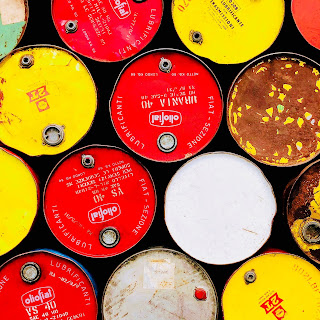Shale Industry Struggles with Rising Costs as Production Increases
From Reuters:
Connect with us on Facebook and Twitter!
Follow @EnergyNewsBlog
U.S. crude oil production topped 10 million barrels per day (bpd) in November, according to monthly estimates published by the Energy Information Administration on Wednesday.
Crude output was the highest in 47 years and just 6,000 bpd below the record set in November 1970 (“Petroleum Supply Monthly”, EIA, Jan. 31).
Production has doubled over the last 10 years, from a low of around 5 million bpd in 2007, reversing decades of decline since the 1970s.
The most recent surge in output confounded some observers, who had forecast production was about to level off, though the EIA had predicted it for some time.Even as production increases, though, there are concerns about the profitability of shale drilling. Another article from Reuters:
U.S. shale producers are facing rising costs for everything from drilling rigs to pressure pumping equipment and labour as the cyclical expansion in oil prices and drilling matures.
The cost of drilling oil and gas wells has increased significantly over the last year, according to the latest provisional estimates from the U.S. Bureau of Labor Statistics.
Drilling costs have increased by more than 10 percent since hitting a cyclical low in November 2016, though they are still 27 percent below the cyclical peak set in March 2014.
Changes in drilling costs tend to follow changes in the number of rigs employed with a lag of around 1-2 months.Meanwhile, oilprice.com asks why the shale industry is not profitable:
Echoing the criticism of too much hype surrounding U.S. shale from the Saudi oil minister last week, a new report finds that shale drilling is still largely not profitable. Not only that, but costs are on the rise and drillers are pursuing “irrational production.”
Riyadh-based Al Rajhi Capital dug into the financials of a long list of U.S. shale companies, and found that “despite rising prices most firms under our study are still in losses with no signs of improvement.” The average return on asset for U.S. shale companies “is still a measly 0.8 percent,” the financial services company wrote in its report.
Moreover, the widely-publicized efficiency gains could be overstated, at least according to Al Rajhi Capital. The firm said that in the third quarter of 2017, the “average operating cost per barrel has broadly remained the same without any efficiency gains.” Not only that, but the cost of producing a barrel of oil, after factoring in the cost of spending and higher debt levels, has actually been rising quite a bit.
Shale companies often tout their rock-bottom breakeven prices, and they often use a narrowly defined metric that only includes the cost of drilling and production, leaving out all other costs. But because there are a lot of other expenses, only focusing on operating costs can be a bit misleading.
Connect with us on Facebook and Twitter!
Follow @EnergyNewsBlog


